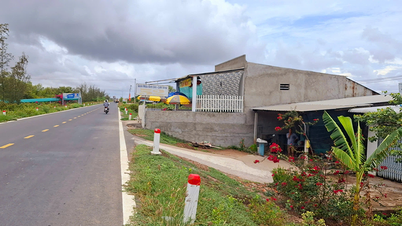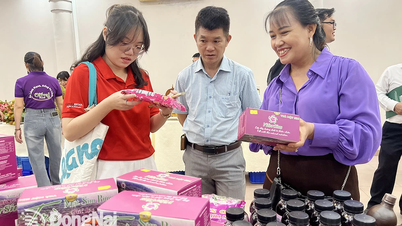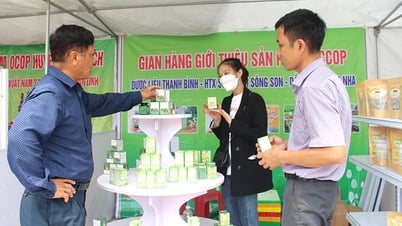World Tuberculosis Day is celebrated on 24 March every year to raise awareness of the devastating health, economic and social impacts of tuberculosis and to promote efforts to end the disease globally.
This year, the Central Lung Hospital/National Tuberculosis Control Program organized the World Tuberculosis Day Celebration on March 24 with the theme "Vietnam defeats tuberculosis".

World Tuberculosis Day was held on the morning of March 24 in Hanoi (photo source: internet).
According to the WHO Global TB Report, in 2022, the number of deaths from TB increased for the second consecutive year and the estimated number of new TB cases each year also increased for the first time in more than a decade.
Globally, in 2021, TB deaths are estimated to be 1.4 million among people without HIV and 187,000 among people living with HIV.
An estimated 10.6 million people developed TB globally in 2021, an increase of 4.5% compared to 2020 (10.1 million). The incidence of new TB cases also increased by 3.6% in 2021 compared to 2020, reversing a 2% annual decline that had persisted for two decades. The number of drug-resistant TB cases also increased in 2021, with 450,000 new cases.
The theme of Vietnam’s World Tuberculosis Day 2023 is “Vietnam defeats tuberculosis”. This is an easy-to-remember theme, as an affirmation, demonstrating the high determination of all classes of people in the fight against tuberculosis.
Vietnam is still a country with a high burden of tuberculosis with 169,000 people suffering from tuberculosis and 12,000 people dying from tuberculosis in 2021 (Global Tuberculosis Report 2022 - WHO).
Of these, 63% of TB patients and 98% of drug-resistant TB patients and their families face catastrophic costs - meaning the cost of diagnosing and treating TB exceeds 20% of the household's annual income.
70% of people with TB are of working age. Therefore, TB is really a problem that affects the economy of each family in particular and the country in general.
COVID-19 and tuberculosis are both dangerous infectious diseases that spread through the air and affect human health, but tuberculosis has not received due attention.
Tuberculosis is a silent killer. No one who gets TB dies immediately. The disease usually lasts silently and is detected late.
From the time of onset of the disease to death, it has spread to many other people. Therefore, early detection and proactive tracing not only save the patient's life but also quickly reduce the source of spread to the community and quickly reduce the epidemic of tuberculosis.
Every year, the country detects and treats more than 100,000 people with tuberculosis. However, the rate of detected and reported patients is only 60%, meaning that up to 40% of tuberculosis patients have not been detected or have been detected but not reported.
Cure rates were maintained at over 90% for new TB patients, ~70% for MDR-TB patients using long-term regimens, and 80% for MDR-TB patients using short-term regimens.
New technologies, new drugs, new approaches in the world have been applied effectively in Vietnam, even with multidrug-resistant and extensively drug-resistant tuberculosis. Ending tuberculosis in Vietnam means avoiding the unnecessary deaths of nearly 12,000 people a year today and hundreds of thousands of families do not have to worry about having someone with tuberculosis.
The tuberculosis epidemic in Vietnam remains high, ranking 11th among 30 countries with a high burden of tuberculosis patients in the world and ranking 11th among 30 countries with the highest burden of multidrug-resistant tuberculosis globally.
In particular, during the two years of the COVID-19 pandemic (2020 - 2021), tuberculosis prevention and control in our country was severely affected. In 2021, Vietnam was one of the countries with the highest rate of reduction in tuberculosis detection globally due to the impact of the pandemic.
People have little or no access to health services, especially TB diagnosis and treatment services. Many health facilities and hospitals in the TB prevention system nationwide are assigned to treat COVID-19 patients.
As a result, tuberculosis prevention work has been delayed. Many provinces and cities lack supplies and equipment, making it difficult for hospitals to diagnose and treat tuberculosis and lung diseases. Activities to detect tuberculosis patients have also been affected and cannot be implemented due to social distancing.
The consequence is a decrease in the number of newly detected TB patients. Specifically, in 2020, the number of TB patients detected and treated nationwide decreased slightly by only 3.1% compared to 2019.
However, by 2021, with the severe COVID-19 pandemic, especially with social distancing regulations, the number of detected TB patients decreased by 22% compared to 2020 and decreased by 24.5% compared to 2019. This decrease is even higher than the global decrease in 2020 (about 18%).
In 2022, the COVID-19 pandemic has not completely ended, the number of COVID-19 cases in the community still exists, therefore, in parallel with strengthening TB prevention work at all levels, measures to ensure hospital safety and community safety against the COVID-19 pandemic also need to be taken into account.
Like many other countries, Vietnam is facing the risk of tuberculosis outbreaks in the community. The World Health Organization (WHO) estimates that in 2020 - 2021, the number and mortality rate of tuberculosis will increase again compared to the previous period. Specifically, the number of patients dying from tuberculosis in 2021 is estimated to be 12,000 people, an increase of 35.8% compared to 2020. If not detected and treated, the mortality rate of tuberculosis patients is very high, about 50%.
In the face of many challenges facing tuberculosis after the COVID-19 pandemic, the National Tuberculosis Control Program plans to adjust the time to end tuberculosis to 2035, in line with the Global End TB Strategy.
The national tuberculosis control program needs to invest a lot of resources to ensure that all tuberculosis patients are examined, detected and treated, with priority given to strengthening tuberculosis detection nationwide, especially proactive detection in the community, active detection at health facilities, combined with routine detection, followed by ensuring the quality of treatment management, expanding the rapid and accurate testing system to promptly detect tuberculosis patients early and prevent the source of infection.
Source































































































Comment (0)